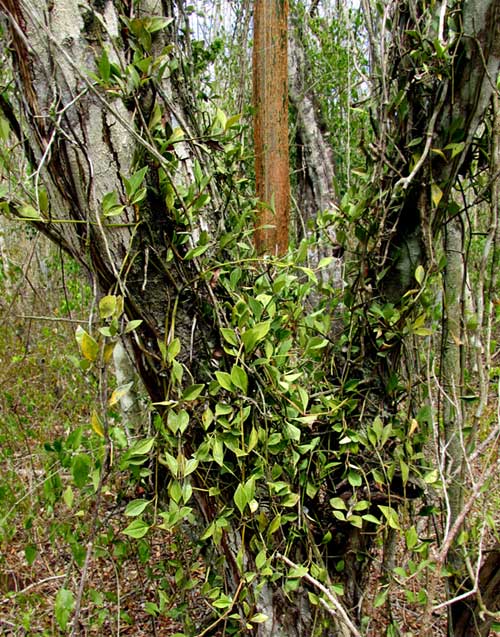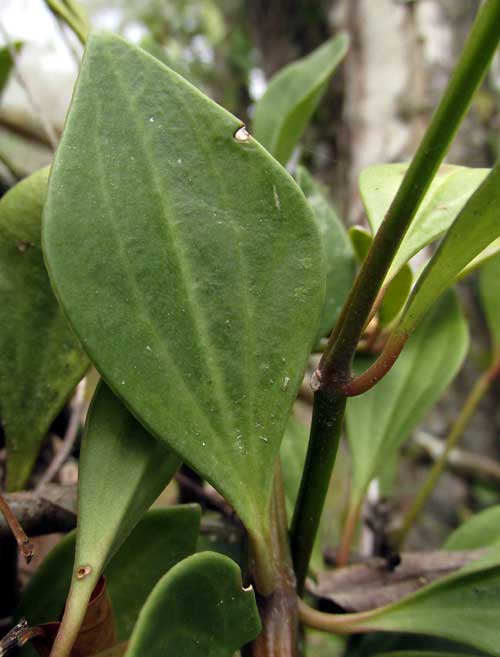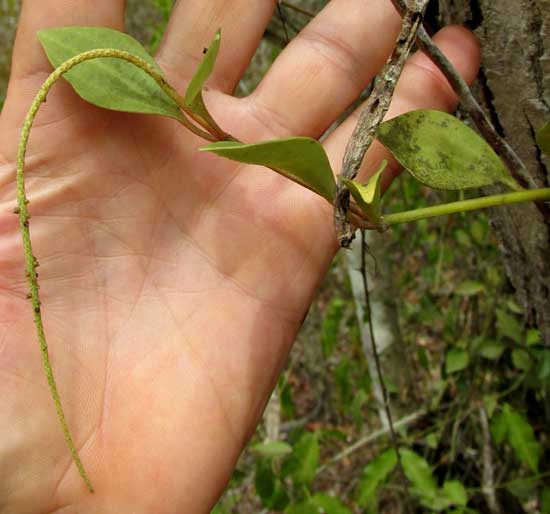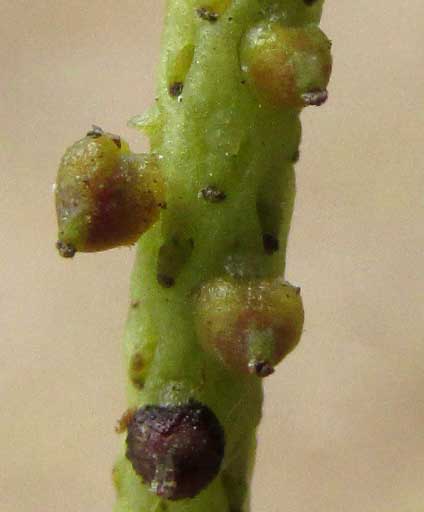Excerpts from Jim Conrad's
Naturalist Newsletter
from the June 12, 2016 Newsletter issued from Hacienda Chichen Resort beside Chichén Itzá Ruins, central Yucatán MÉXICO
PEPEROMIA
Along a trail through the woods not far from the hut a tangle of herbaceous stems and leaves hangs in the fork of a tree at about chest level. The tangle isn't rooted either in the ground below the tree, or in the tree it's living on, so it's an "epiphyte," like many bromeliads, aroids and orchids, just innocently living on the tree. The tangle is shown below:

Leaves on this viny plant arise opposite one another at stem nodes, and the leaves themselves are semi-succulent, with three or four obscure veins running from one end to another, ± paralleling one another instead of having secondary veins branching off the midrib. A leaf close-up is shown below:

Many of the epiphyte's stems end in slender, down-curving, tail-like things such as the one shown below:

Notice that here and there on the tail-like thing there appear tiny, brown items. A close-up of some of those is shown below:

The brown items are individual fruits, so the tail-like thing is a spike-type flower or fruit cluster. All these details weren't needed, though, to know that here we have a species of peperomia, genus Peperomia. Peperomias are well known to Northerners because they're often grown as potted plants, some species producing pretty clusters of succulent, variegated leaves and interesting flowering spikes. Peperomias belong to the Black Pepper Family, the Piperaceae, so the tiny, brown fruits in the above photo are almost peppercorns. The peppercorns providing the North's black pepper are produced by Piper nigrum of tropical Asia, so they're from a different genus of the same family as our Peperomia.
About a thousand Peperomia species have been described, mostly from tropical South America. Several occur in the Yucatan Peninsula, though mainly they're in the Peninsula's southern part, since the northern Yucatan is too arid for most species. Our present species is an exceptional one that tolerates long, severe dry seasons. It's PEPEROMIA ANGUSTATA, occurring from southern Mexico south through Central America to northern South America.
Maybe the main field mark for members of the Black Pepper Family is that their tiny, simplified flowers are clustered into long flowering spikes. In the above picture you can see that each flower is associated with a green, scale-like bract. Peperomia blossoms, though almost microscopic in some species, bear both male and female parts. Peperomia flowers consist of two minuscule stamens and a pistil, which matures into the peppercorn-like fruit. Technically the fruit is considered a thin-coated berry.
Peperomia ANGUSTATA is uncommon here, and I can't find mention of its use traditionally. It's just an interesting, somewhat unusual little plant, one I make a point of nodding to each time I pass it by.